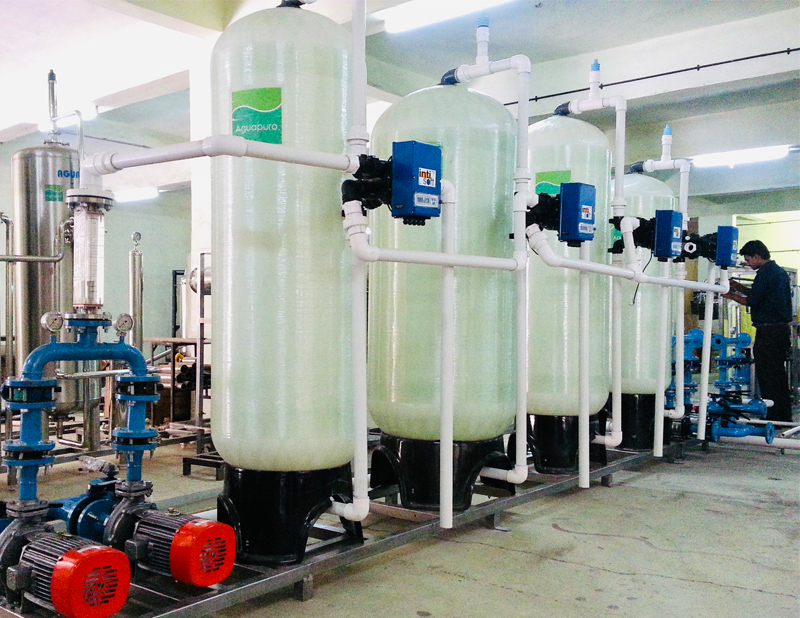DM Water Plant
DM Plant, DM Water Plant, Demineralization Water Treatment Plant Manufacturer, India
Demineralization is the removal of dissolved mineral solids using an IX (Ion-Exchange) process. But, before we delve into the mechanics of demineralization, let's review the fundamentals of an IX reaction.
Minerals and salts dissociate into their constituent ions in the presence of water. These dissolved solids are made up of anions (negatively charged ions) and cations (positively charged ions), both of which are attracted to counterions (or ions of an opposing charge). An IX column contains a resin made consisting of plastic beads with an ionic functional group attached to them.
Through mutual electrostatic attraction, these functional groups loosely retain ions with opposing charges. Water containing dissolved ions is added to the resin during an active IX cycle.Even as the resultant solution is drained away, the ions in solution will trade places with the ions on the resin beads, clinging to the resin's functional groups. When one ion has a stronger affinity for the functional group than the one already present, IX occurs.
The presence of certain ionic pollutants will determine whether anionic or cationic resins are required. The exchange of ions in a normal IX reaction merely results in the replacement of contaminated ions with less undesirable ions. The goal of an IX sodium softening system, for example, is to replace hardness ions (e.g., Ca2+ or Mg2+) in solution with sodium ions (Na+).As a result, the treated solution will be soft to the touch, with a higher sodium ion concentration.

